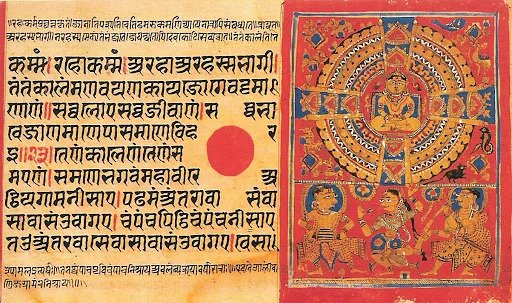
Delving into Jain Literature: A Profound Legacy of Spiritual and Philosophical Wisdom
Jainism, among the most ancient religions originating in India, possesses a literary heritage that is as deep and timeless as the faith itself. Over millennia, this body of work has shaped not only religious practice but also contributed to India’s broader intellectual and cultural heritage. The extensive body of Jain literature is predominantly composed in Prakrit, Sanskrit, Apabhramsha, and several regional Indian languages. In this blog, we will delve into the key components, characteristics, and significance of Jain literature.
The Canonical Texts: Agamas
The foundation of Jain literature lies in the Agamas, which are the sacred scriptures of Jainism. These texts are said to contain the teachings of Lord Mahavira, the 24th and last Tirthankara of this era. These scriptures primarily exist in the Svetambara tradition, whereas the Digambara sect follows a different set of texts due to their belief that the original Agamas were lost.
The Agamas are categorized into several groups, including Angas, Upangas, and Mulasutras. The Angas are the core texts and consist of dialogues between Mahavira and his disciples, addressing a wide range of topics from cosmology to ethics. The Upangas and other auxiliary texts offer further commentary and explanations of Jain principles.
Philosophical Texts and Commentaries
Beyond the canonical texts, Jain literature includes a rich array of philosophical writings. These works often focus on key Jain doctrines, such as Ahimsa (non-violence), Anekantavada (the doctrine of multiple viewpoints), and Syadvada (the theory of conditional predication). These texts delve into metaphysics, ethics, logic, and epistemology, offering a detailed analysis of how one can attain liberation (moksha) and lead a virtuous life.
Prominent Jain philosophers, such as Umaswati, Kundakunda, and Haribhadra, have left an indelible mark on Indian philosophical discourse. Umaswati’s “Tattvartha Sutra” is one of the most significant texts in Jain philosophy, offering a synthesis of both Svetambara and Digambara thought and providing a systematic exposition of Jain metaphysics and ethics.
Narrative Literature: Jain Epics and Stories
Jain narrative literature is particularly known for its extensive collection of epics, puranas, and stories that serve as both entertainment and moral instruction. These stories often revolve around the lives of the Tirthankaras, Jain monks, and laypeople, illustrating the moral consequences of their actions and the importance of adhering to Jain principles.
Among the most renowned Jain epics is the ‘Adipurana,’ authored by Acharya Jinasena, which narrates the life and teachings of Rishabhanatha, the very first Tirthankara. Another significant scripture is the ‘Kalpasutra,’ detailing the life of Lord Mahavira along with accounts of other key Jain figures. These stories not only serve to inspire devotees but also preserve the historical and cultural narratives of the Jain community.
Contribution to Language and Literature
Jain literature has also played a significant role in the development of various Indian languages. The use of Prakrit in Jain texts helped standardize the language, and Jain scholars contributed to the evolution of early Hindi, Gujarati, Kannada, and other regional languages through their literary works. Jain texts are often written in a clear, simple style, making them accessible to a wide audience, which helped in the dissemination of Jain teachings.
Jain Manuscript Tradition and Preservation
A unique aspect of Jain literature is its manuscript tradition. Over the centuries, Jain monks and scholars have meticulously preserved ancient texts by copying manuscripts, often in elaborately decorated formats. Some of the oldest and most exquisitely illustrated manuscripts in India are Jain texts, which have survived due to the community’s commitment to preserving knowledge. Today, several Jain libraries, such as the Jaisalmer Jain Bhandar and Patan Hemchandracharya Jain Gyan Bhandar, house invaluable collections of these manuscripts.
Conclusion
Jain literature is a vast and profound body of work that not only guides the spiritual and ethical lives of its followers but also contributes to the broader intellectual and cultural fabric of India. Its emphasis on non-violence, philosophical inquiry, and moral storytelling continues to resonate with people beyond the Jain community, offering universal lessons on how to live a meaningful and compassionate life. Whether through its canonical scriptures, philosophical treatises, or narrative literature, Jain literature remains a vibrant and enduring testament to the wisdom of this ancient religion.
